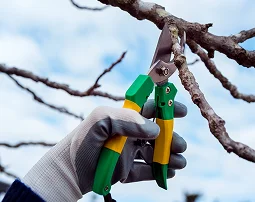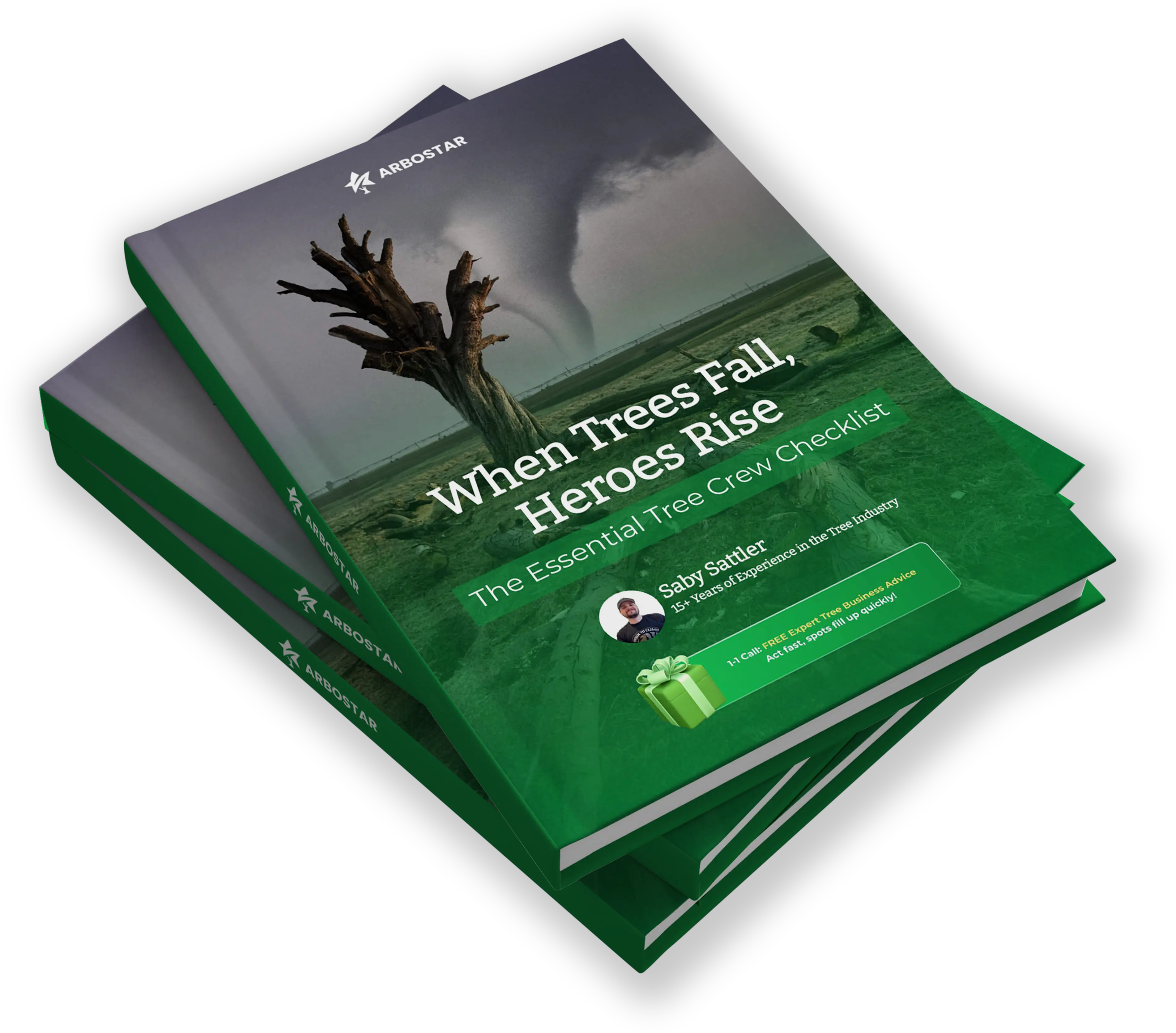How Much Do Tree Service Companies Make?

The tree service industry presents remarkable earning potential for dedicated professionals willing to master both the technical and business aspects of arboriculture. Whether you're considering starting a tree care company or seeking to optimize your existing operation, understanding the financial landscape is essential for long-term success. This comprehensive guide explores average revenues, tree service owner salary expectations, tree service profit margin benchmarks, and strategies to make your tree removal business profitable.
Average Revenue of Tree Service Companies
Tree service company revenues vary significantly based on operational scale, geographic location, and service portfolio diversity. The financial performance typically breaks down across three distinct categories, each presenting unique opportunities and challenges for business owners.
Small Startups and Solo Operations: These emerging businesses commonly generate $100,000 to $200,000 in annual revenue. These companies typically focus on basic services such as tree trimming, small-scale removals, and routine maintenance. The reduced revenue is attributed to low equipment capacity, small cabin crews, and an underdeveloped customer base.
Mid-Sized Operations: Established businesses in this category achieve $500,000 to $1,000,000 in yearly revenue. These companies offer expanded service portfolios including storm damage remediation, large tree removals, and specialized plant health care (PHC) programs. Their success stems from operational efficiency, established customer relationships, and diverse service offerings.
Large Enterprises: Premium tree service companies generate $1 million or more annually. These organizations provide comprehensive service suites, maintain multiple crew teams, and serve diverse markets including municipal contracts, commercial properties, and high-end residential clients.
| Business Size | Annual Revenue Range | Typical Services |
|---|---|---|
| Small Startups | $100,000 - $200,000 | Basic trimming, small removals |
| Mid-Sized Operations | $500,000 - $1,000,000 | Storm response, large removals, PHC |
| Large Enterprises | $1,000,000+ | Full-service operations, municipal work |
The tree service industry offers substantial growth potential, particularly for businesses that strategically expand their service offerings and improve operational efficiency. According to the U.S. Bureau of Labor Statistics, the landscaping and groundskeeping industry, which includes tree services, is projected to grow faster than average. Industry revenue has grown at a CAGR of 5.8% over the past five years, reaching an estimated $35.6 billion in 2024, demonstrating the sector's robust expansion potential.

Tree Service Owner Salary: What's the Take-Home Pay?
Understanding tree service owner salary expectations requires examining how business owners typically structure their compensation within this industry. Most successful tree service owners take home between 10% and 20% of their company's total revenue, though this percentage fluctuates based on business size, operational efficiency, and market positioning.
To be of practical illustration, suppose the following:
| Annual Revenue | Owner Salary Range |
|---|---|
| $200,000 | $20,000 - $40,000 |
| $500,000 | $50,000 - $100,000 |
| $1,000,000 | $100,000 - $200,000 |
Several factors influence owner compensation beyond simple revenue percentages. The owner's operational involvement significantly impacts salary potential—hands-on owners who actively participate in daily operations often command higher compensation percentages. Additionally, business owners must balance immediate compensation with strategic reinvestment needs for equipment upgrades, crew expansion, and marketing initiatives.
Smart business owners frequently reinvest portions of their earnings back into the company to fuel growth, purchase advanced equipment, or expand their workforce. This reinvestment strategy proves essential for scaling operations and maximizing long-term profitability. Many successful owners view initial years as investment periods, accepting lower immediate compensation to build sustainable, high-earning businesses.
The geographic location also affects owner salary potential. Tree service companies in affluent suburban areas or regions with severe weather patterns typically command higher service rates, translating to increased owner compensation opportunities.
Is the Tree Removal Business Profitable?
The question "is the tree removal business profitable?" requires examining both revenue potential and operational costs associated with this specialized service. Tree removal represents one of the most lucrative services within the arboriculture industry, but success depends on managing the inherent challenges effectively.
The average costs to remove trees range between 500 and 2500 dollars per project and the charges are dependent on the size of trees, their accessibility, complexity of their removal, and local market figures. As emergency removal of storm damage commonly pays high prices sometimes up to 5000 dollars and more, when the removal covers dangerous conditions which demand an immediate attention.
However, tree removal involves substantial operational costs that impact overall profitability:
-
Equipment Investment. There is a great deal of special equipment used in the tree care industry, such as bucket trucks, chippers, stump grinders, and rigging gear which involves large investments in equipment items
-
Insurance Costs. Comprehensive liability coverage for high-risk tree removal work commands premium rates
-
Labor Costs. Qualified Arborists and certified tree workers require good salaries
-
Disposal Fees. Wood waste disposal and debris removal add per-job costs
-
Maintenance Costs. Heavy equipment requires regular maintenance and occasional major repairs
Despite these expenses, tree removal remains highly profitable when managed efficiently. The key lies in maximizing revenue through complementary services such as stump grinding, debris cleanup, and follow-up tree care services. Many successful companies bundle services to increase average job values while providing comprehensive customer solutions.
Tree removal businesses that focus on efficiency, safety, and customer service can achieve strong profit margins while building reputations that support premium pricing strategies. The service's profitability increases significantly when companies develop expertise in specialized areas such as hazardous tree removal or emergency storm response.

Tree Service Profit Margin: What's Considered Healthy?
Understanding tree service profit margin benchmarks helps business owners evaluate their financial performance and identify improvement opportunities. Healthy margins in the tree service industry typically range between 10% and 20%, though specific percentages vary based on service mix, operational efficiency, and market positioning.
Different services within the tree care industry demonstrate varying margin potential:
Tree Trimming and Pruning: These routine services typically achieve 15% to 25% margins due to predictable costs and efficient workflows. Regular maintenance agreements generate constant streams of income and the running cost is low.
Tree Removal Services: While generating high revenue per project, removal services often show 10% to 20% margins due to equipment costs, disposal fees, and insurance expenses. However, emergency removals can achieve higher margins through premium pricing.
Plant Health Care (PHC): These specialized services frequently deliver 30% to 50% margins. PHC services including soil treatments, pest management, and fertilization programs require fewer heavy equipment resources while commanding professional service rates.
Storm Damage Response: Emergency services during severe weather events can achieve 25% to 40% margins through premium pricing and efficient crew deployment strategies.
Several factors influence profit margin performance:
| Factor | Impact on Profit Margin |
|---|---|
| Pricing Strategy | Companies using value-based pricing achieve superior margins over cost-based pricing. |
| Operational Efficiency | Streamlined workflows, equipment maintenance, and skilled crews reduce costs and improve service quality. |
| Service Mix | Balancing high-margin services like PHC with lower-margin services like removals optimizes profitability. |
| Geographic Market | Service areas with limited competition or high property values support premium pricing strategies. |
Companies consistently achieving margins above 20% typically excel in operational efficiency, strategic pricing, and service quality. These businesses often invest in crew training, modern equipment, and customer relationship management to maintain competitive advantages.

What Affects Tree Service Profitability?
Multiple interconnected factors determine tree service business profitability, with some elements under direct management control while others require strategic adaptation to external market conditions.
Sales and Marketing Strategy: Effective marketing drives customer acquisition and retention while supporting premium pricing strategies. Successful tree service companies invest in professional websites, search engine optimization, and local community engagement. Such digital marketing initiatives as the presence in social media and managing customer reviews have a considerable effect on generation and conversion rates. Marketing companies which monitor the marketing returns on the investments and adapt them have a better chance of success than their competitors who only depend on word of mouth referrals. Latest marketing strategies can be learned in our education hub.
Seasonal Business Management: The tree service industry experiences pronounced seasonal fluctuations, with peak demand occurring during spring and fall months. Profitable companies develop strategies to maintain cash flow during slower winter periods through diversification into complementary services such as snow removal, holiday lighting installation, or indoor plant care. Some businesses use off-seasons for equipment maintenance, crew training, and marketing preparation for busy periods.
Reputation and Customer Relationships: Strong reputations drive referral business and support premium pricing strategies. Companies prioritizing customer service, safety protocols, and work quality build valuable word-of-mouth marketing that reduces customer acquisition costs. Online review management and customer testimonial programs amplify positive reputation effects while addressing service issues promptly maintains customer trust.
Service Specialization and Expertise: Tree service companies that develop specialized expertise command higher rates than generalist competitors. Specializations might include hazardous tree removal, historic tree preservation, commercial property maintenance, or municipal contract services. Certified arborists and the investment in specialized equipment are contributing toward the premium positioning and the attraction of the customers who are ready to invest in expertise and quality.
Strategic Pricing and Cost Management: Profitable companies implement pricing strategies that reflect service value rather than simply matching competitor rates. This involves understanding true service costs, including equipment depreciation, insurance, labor, and overhead expenses. Effective cost management includes regular equipment maintenance, efficient routing and scheduling, and strategic inventory management to minimize waste and maximize crew productivity.
Successful tree service owners monitor these profitability factors continuously, making strategic adjustments based on market conditions and business performance metrics. Business firms that perform well in many dimensions usually perform better on financial performance and accumulation of sustainable competitive advantages.

Final Thoughts: How Much Can You Really Make?
The earning potential for tree service companies spans a remarkable range, from modest supplemental income to substantial seven-figure enterprises. Success depends primarily on the owner's ability to execute effective business strategies while delivering exceptional customer service and maintaining operational efficiency.
Small tree service businesses typically generate $50,000 to $100,000 in annual owner income, providing comfortable livings for dedicated professionals. Mid-sized operations can scale to $100,000 to $300,000 in owner compensation, while large enterprises potentially deliver $500,000 or more annually through strategic growth and market expansion.
The tree service industry offers genuine opportunities to build six- and seven-figure businesses when approached with proper planning, execution, and commitment to continuous improvement. Key success factors include developing comprehensive service offerings, maintaining high safety standards, investing in modern equipment, and building strong customer relationships through exceptional service delivery.
For entrepreneurs considering entering this industry, the U.S. Small Business Administration provides valuable resources for starting and growing a successful business, including guidance on business planning, funding options, and regulatory requirements.
Technology solutions like ArboStar's comprehensive business management software help streamline operations, reduce administrative overhead, and improve customer satisfaction while maintaining focus on core tree care services. By leveraging proper tools and implementing proven business strategies, tree service entrepreneurs can maximize their earning potential while contributing positively to community environmental health.
The path to financial success requires dedication to operational excellence, strategic business development, and unwavering commitment to safety and quality. Tree service companies that master these elements while adapting to market opportunities can achieve remarkable financial success while building lasting legacies in their communities.
For businesses ready to optimize their operations and increase profitability, explore ArboStar's scheduling software and estimating solutions, or discover how our business intelligence module can help boost service margins and customer satisfaction.
While the financial rewards of running a tree service business can be substantial, the true value goes beyond numbers. Arborists play a critical role in preserving the green infrastructure that supports life in our cities. Trees aren’t just property assets, they’re the lungs of the urban environment, filtering air, reducing heat, and improving the quality of life for every resident.
Every tree preserved, every safe removal completed, and every soil treatment applied contributes to a healthier, more resilient ecosystem. As a tree care professional, you’re not just growing a business – you’re safeguarding the future of our neighborhoods, parks, and communities.
At ArboStar, we believe success is measured not only by revenue, but by impact. Supporting arborists means supporting cleaner air, cooler streets, and a greener tomorrow. Because when trees thrive, so do we all.






